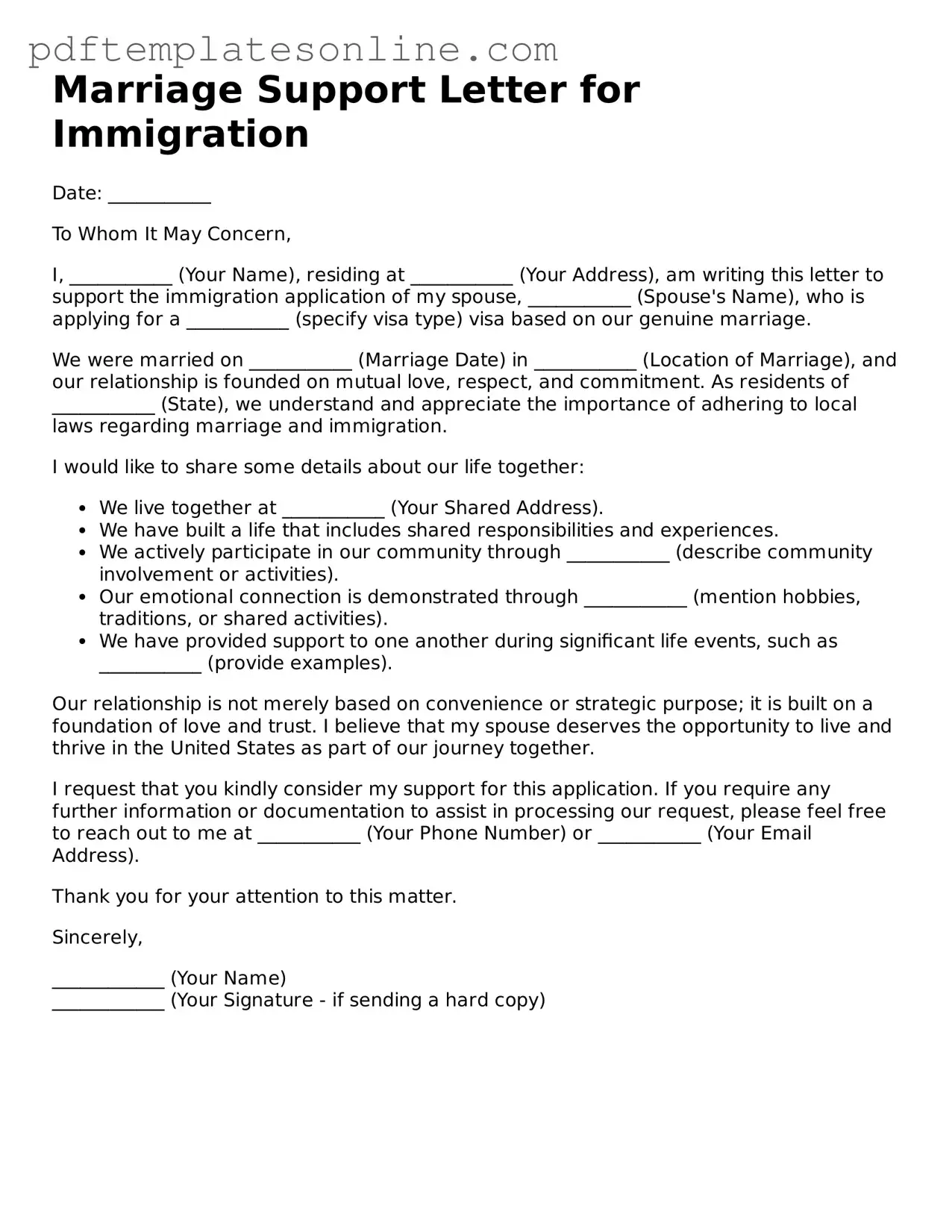Filling out the Marriage Support Letter for Immigration form can be a daunting task, and many individuals make common mistakes that can hinder the application process. One significant error is providing insufficient personal details. Applicants often forget to include essential information such as full names, dates of birth, and addresses. These details are crucial for establishing the authenticity of the marriage.
Another frequent mistake is failing to sign the letter. A signature adds a personal touch and signifies that the information provided is accurate. Without a signature, the letter may be considered incomplete, leading to delays in processing. It’s important to remember that the letter should be signed by the person providing support, not just anyone associated with the application.
Some individuals neglect to include specific examples of the couple's relationship. General statements about love and commitment may not be enough. Including anecdotes or details about shared experiences can help paint a clearer picture for immigration officials. This personal touch can make a significant difference in how the letter is perceived.
Another common oversight is the use of vague language. Phrases like “we get along well” do not provide much insight. Instead, using descriptive language that illustrates the couple's daily life and interactions can strengthen the letter. Specifics about how they support each other emotionally and financially can also enhance the narrative.
Additionally, people often forget to proofread their letters. Spelling and grammatical errors can undermine the credibility of the document. A well-written letter reflects attention to detail and respect for the immigration process. Taking the time to review the letter can help catch mistakes that could otherwise lead to misunderstandings.
Some applicants also fail to address the letter to the appropriate immigration office. Not specifying the correct recipient can lead to confusion and delays. It is essential to research and ensure that the letter is directed to the right department, which can vary depending on the specific case.
Moreover, individuals sometimes overlook the importance of including contact information. Providing a phone number or email address allows immigration officials to reach out for further clarification if needed. This openness can facilitate communication and expedite the process.
Another mistake is not providing context about the couple's marriage. Applicants may assume that the immigration office understands the significance of their relationship. However, including details about how they met, their journey together, and future plans can provide essential context that supports the application.
Finally, some individuals submit the letter without considering the overall tone. A supportive and positive tone is vital. If the letter comes across as defensive or overly critical of the immigration process, it may not convey the intended message. Striking the right balance in tone can help create a more favorable impression.
